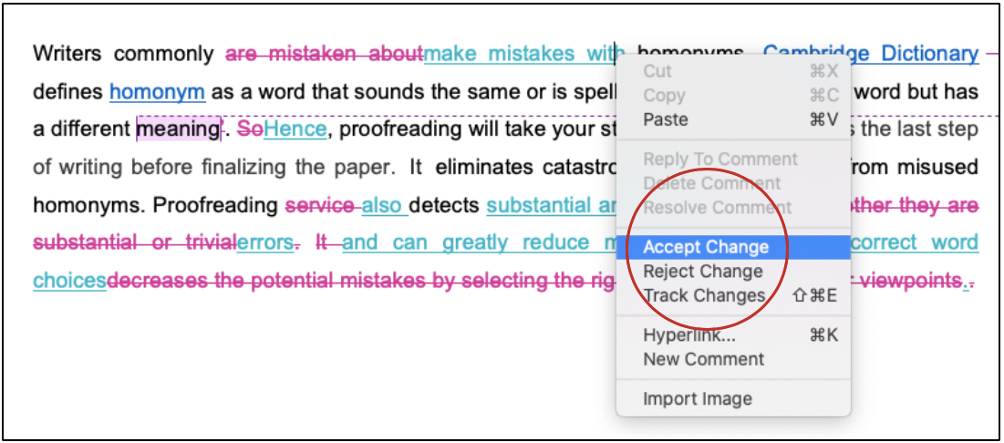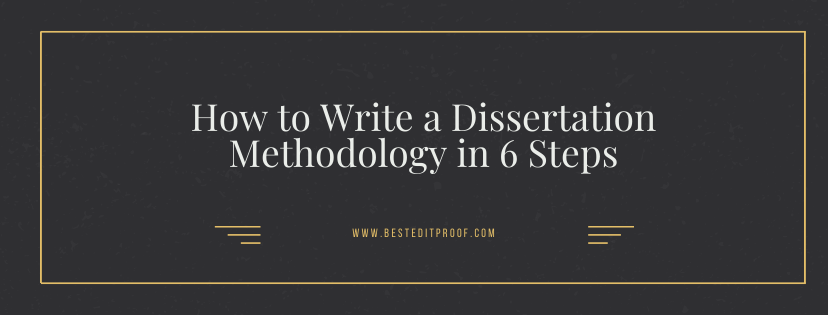At the end of most undergraduate or postgraduate degrees, you are required to submit a thesis or a dissertation based on original research. The way of writing and the structure of a dissertation depends on your field of study and sometimes your program. However, it is largely divided into at least four or five chapters, including the introduction and conclusion. A dissertation is an extended usually written treatment of a subject, specifically one submitted for a doctorate. This article provides a step-by-step guide on writing and structuring a dissertation

This handout provides a step-by-step guide on writing and structuring a dissertation. To give you an opportunity to practice proofreading, we have left a few spelling, punctuation, or grammatical errors in the text. See if you can spot them! If you spot the errors correctly, you will be entitled to a 10% discount.
At the end of most undergraduate or postgraduate degrees, you are required to submit a thesis or a dissertation based on original research. The way of writing and the structure of a dissertation depends on your field of study and sometimes your program. However, it is largely divided into at least four or five chapters, including the introduction and conclusion. According to Merriam-Webster, a dissertation is an extended usually written treatment of a subject, specifically one submitted for a doctorate.
The general structure of a dissertation begins with an introduction to the study. After that, you should write the relevant sources of the study, known as a literature review. Next comes the methodology and overview of your research. Then, you can write a short paragraph on the results of the previous studies and their implications. To end the dissertation, conclude your findings, re-summarize your limitations, and offer some suggestions for future studies.
However, there are other important elements of a dissertation such as a title page, abstract, reference list. Before you begin forming a structure of your dissertation, check the guidelines provided by your program or university and consult your supervisor.
Here is the step-by-step guide on writing and structuring your dissertation.
1. Title Page
The title page is an element of dissertations that most people are fully aware of, thanks to the numerous assignments submitted during school days. The title page of a dissertation comprises your name, your department, degree program, institution, and submission date. Along with this, you can mention the names of your supervisor and university. Different programs have their set way of formatting the dissertation title page. You can use a copy of this page as a cover while printing and binding too.
2. Acknowledgment
Acknowledgment provides the space to give appreciation to all the people who have helped you in the process of writing your dissertation. In this, you generally thank your professors, supervisor, friends, and family who supported you. However, this section is sometimes optional.
3. Abstract
It is one of the most important parts of a dissertation. An abstract generally consists of between 150 and 300 words, and you should write it after you have completed writing your whole dissertation. The abstract is like a trailer before the movie. People read it before they read the entire thesis. Therefore, it is crucial to keep it short, crisp, and to the point. However, while writing an abstract, make sure you keep a few things in mind. Do mention the main topic and the objective of your research. Describe the method you have used to conduct the research and summarize the main result. End it by stating the conclusion of your research.
4. Table of contents
Table of contents includes the list of all chapters in the dissertation with their page numbers. The table of contents gives an overview of the structure of the dissertation or thesis. It also helps navigate through the research easily. You can create your table of contents automatically in Microsoft Word.
5. List of Figures and Tables
You have to itemize the figures and tables that you have used in your thesis in a numbered list. We can usually generate this with the help of the Insert Caption feature in MS Word.
6. List of Abbreviation
The list of abbreviations includes all abbreviations used in the dissertation. To make it easy for the readers, you should alphabetize the list of abbreviations used throughout your dissertation.

7. Glossary
It is similar to the glossary in a dictionary. The glossary includes specific words or jargon used in the dissertation that general readers might not easily understand. It contains these words and their meaning alphabetically.
8. Introduction
The actual dissertation starts with the introduction part. An introduction sets up the topic of the research, along with the purpose and relevance of the research. Your readers get an idea of what to expect throughout the dissertation.
Here, you build your topic and provide the necessary background information. You narrow down the focus and define the need and the scope of your research. Moreover, you can also discuss the existing research on the topic and show how your work is relevant to a broad set of problems and debates. You can make readers aware of the questions and objectives of your research. You can also state reasons for opting for the selected topic that you have chosen for conducting research.
Therefore, the introduction of a dissertation must be engaging, clear, and relevant to your research topic. The reader should understand what, why, and how of your research at the end of the introduction.
9. Literature Review
While researching your topic, you must have come across various existing works on the same topic or subject. Literature review contains a list of previously conducted research papers, thesis, studies, or dissertations on a topic similar to yours or have a similar field of study.
In the literature review section, you need to mention such relevant sources and critically evaluate and analyze each source. The literature review does not summarize the existing studies. It develops a coherent structure as well as an argument to justify the argument and relevance for your research. It is usually the basis of all the theoretical work. The literature review helps you analyze the concepts, key theories, and models that are framing your research.
How to Write the Best Theoretical Framework for Your Dissertation
10 Free Online Journal and Research Databases for Researchers
10. Methodology
This chapter of the dissertation explains all the methods used to conduct the research. It aims to validate the research. The methodology section includes all types of approaches, methods of data collection, along with the method used for data interpretation and analysis.
Mention the details of when, how, why, and with whom the research has been conducted. You should also add the details of all the tools and materials that have been used in the process. Lastly, end the chapter with a discussion on the obstacles and limitations you faced while researching and how you overcame them with an evaluation of your method.
Try to build an accurate report that successfully justifies the methods and approaches followed while conducting the study.
11. Result
It is the section that shows the fruit of your months-long hard work. The result obtained through research needs to be elaborated in this section. You can build up this chapter around the study hypotheses. It is often helpful to use graphs, charts, and tables in the result. It gives a proper insight into your research briefly and makes the dissertation look put together.
12. Discussion
This chapter explores the implications and meaning of the results of your research. You can interpret the results in detail and discuss whether it met your expectations or not and, if it did meet, how. It is also a good idea to consider an alternative interpretation of your data and write a short discussion on any limitations that you might have discovered along the process of your research that might have affected the study results.
13. Conclusion
The conclusion of the dissertation must contain and answer the research question(s) of the study. It should give the readers a clear understanding of the central argument of your research, and the results of the study conducted. The conclusion should also include any recommendations for research and reflects what and how you did it.
14. List of References
The reference list or list of references at the end of the dissertation includes the full details of all the sources used to refer to, mention, and cite. The reference style differs from field to field and, sometimes, from university to university. Ensure to check the guidelines and consult with your supervisor to make certain of the preferred reference style.
15. Appendices
Sometimes, there is certain information that does not fall under any of the above-listed chapters. Such information can look redundant if put under any other section, but if omitted can make the dissertation appear lacking. Documents such as interview transcripts, full figure tables, and survey questionnaires, are some examples of the information that contain the essential information and need to be included in the appendices.
Dissertations require patience, research, and proper guidance. It is a month-long process represented on a few hundred pages. While preparing a dissertation and thesis can be an overwhelming task, with proper planning and guidance, the task becomes a little more doable. If you are on the lookout for such guidance, we offer professional proofreading and editing services. Availing of such services can help you polish your research work and deliver an impactful dissertation.
Writing a thesis or dissertation is not an easy task. However, systematic thinking and structure can make the process easier. From the introduction to the demonstration of your argument, literature review, and analysis of the result, everything is vital to prepare an outstanding thesis. However, if you want to seek assistance from a professional editing and proofreading service provider to write a seamless thesis or dissertation, feel free to contact us. We will be happy to help you.
Taking master or Ph.D. thesis help from professional editing and proofreading services doesn’t only facilitate the writing process but also helps you execute a flawless thesis with a well-formed and informative thesis paper. When highly qualified writers take responsibility for your thesis, you don’t need to worry about structure, consistency, flow, tone, grammar, and accuracy.

Best Edit & Proof expert editors and proofreaders focus on offering manuscripts with proper tone, content, and style of academic writing, and also provide an upscale editing and proofreading service for you. If you consider our pieces of advice, you will witness a notable increase in the chance for your research manuscript to be accepted by the publishers. We work together as an academic writing style guide by bestowing subject-area editing and proofreading around several categorized writing styles. With the group of our expert editors, you will always find us all set to help you identify the tone and style that your manuscript needs to get a nod from the publishers.
You can also avail of our assistance if you are looking for editors who can format your manuscript, or just check on the particular styles for the formatting task as per the guidelines provided to you, e.g., APA, MLA, or Chicago/Turabian styles. Best Edit & Proof editors and proofreaders provide all sorts of academic writing help, including editing and proofreading services, using our user-friendly website, and a streamlined ordering process.
Visit our order page if you want our subject-area editors or language experts to work on your manuscript to improve its tone and style and give it a perfect academic tone and style through proper editing and proofreading. The process of submitting a paper is very easy and quick. Click here to find out how it works.
Our pricing is based on the type of service you avail of here, be it editing or proofreading. We charge on the basis of the word count of your manuscript that you submit for editing and proofreading and the turnaround time it takes to get it done. If you want to get an instant price quote for your project, copy and paste your document or enter your word count into our pricing calculator.
If you need support for editing and proofreading services, contact us. You can also e-mail us or use the 24/7 live chat module to get direct support. We have a 24/7 active live chat mode to offer you direct support along with qualified editors to refine and furbish your manuscript. Alternatively, you can text us through our WhatsApp business support line.
Follow us on Twitter, LinkedIn, Facebook, Instagram, and Medium.
For more posts, click here.
How to Determine Variability in a Dataset
14.10.2023
How to Determine Central Tendency
19.02.2023
How to Specify Study Variables in Research Papers?
14.01.2023
Population vs Sample | Sampling Methods for a Dissertation
14.01.2023
7 Issues to Avoid That may Dent the Quality of Thesis Writing
18.12.2022
How to Ensure the Quality of Academic Writing in a Thesis and Dissertation?
04.12.2022
How to Define Population and Sample in a Dissertation?
03.12.2022

After a concise overture of the concerned discipline in the introductory section of a research paper or dissertation, the literature review should begin by delineating the significance of and the most critical works in that discipline. This handout provides six easy-to-follow steps for an impeccable literature review.
Continue Reading
Writing an impactful introduction is more than just following the rules. If you search on the Internet, you may find stereotypical rules and regulations. However, it is important to understand that the author’s creative sense and ability to comprehend the topic helps in executing an effective introduction. This article discusses the major elements of writing an introduction and how you can write an impactful introduction.
Continue Reading
Although the rules of English capitalization seem simple at first glance, it might still be complicated in academic writing. You probably know you should capitalize proper nouns and the first word of every sentence. However, in some cases, capitalization is required for the first word in a quotation and the first word after a colon. In this article, you will find 15 basic capitalization rules for English grammer.
Continue Reading
A methodology section explains the entire process of data collection and analysis based on logic and philosophy. This section is an unavoidable part of a dissertation or a research paper. Considering errors in the methodology section enervates the entire dissertation. Here, we bring you a general guide on the steps to compose a flawless methodology section for a dissertation.
Continue Reading
A dissertation defense is one of the critical milestones one needs to cross to obtain a doctoral degree. It is a process that helps a candidate proffer their research knowledge to an audience of accomplished academics. Thus, preparing to defend a dissertation can feel distressing and burdensome, for one needs to tick several checkboxes at once. But, with the right set of steps and adequate practice, candidates can successfully overcome this unease.
Continue Reading
There are several naive job seekers who waste their valuable time and energy designing their resumes instead of writing an eye-catching cover letter. It is too often people looking for a job neglect the importance of a cover letter. This article shows you 10 tips to write a persuasive cover letter for a resume and presents a short guide that will help you draft an impeccable cover letter for a resume.
Continue Reading
A literature review includes academic sources on a specific topic. It aims to supply up-to-date knowledge, ensuring that you specify relevant theories, methodologies, and deficiencies in the extant research.
Continue Reading